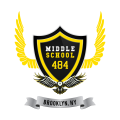Where Do Students with IEPs Attend School?
Students with IEPs participate in the same admissions processes as their non- disabled peers. All schools serve students with disabilities. That’s because special education is not a class or a place. Rather, it describes a wide range of services that can be provided in a variety of school settings. Most students with IEPs attend their zoned or district school. Some attend specialized programs in district schools and others require the support of a District 75 program or an accessible school building. The IEP team will conduct evaluations to determine which school setting will best support your child in reaching his or her academic goals.
Wherever your child attends school, know that school staff are trained to develop high quality IEPs, educate students with different needs, and create inclusive schools where students with and without disabilities share one school community.
Continuum of Services
There is an array of services available to support your child in his or her least restrictive environment. There must be a clear justification anytime a student is removed from the general education setting. Here is a list of the service recommendations that the Individualized Education Program (IEP) team may consider for your child:
General Education
Your child will be educated in the same classroom as non-disabled peers.
General Education with Related Services
Your child will be educated in the same classroom as non-disabled peers. He or she will receive related services, such as physical therapy or counseling, in the classroom or in a separate location:
General Education with Special Education Teacher Support Services
Your child will be educated in the same classroom as non-disabled peers. He or she will receive direct or indirect Special Education Teacher Support Services (SETSS) from a special education teacher. Your child’s IEP may recommend:
■ Direct SETSS
■ Indirect SETTS
■ A combination of the two

